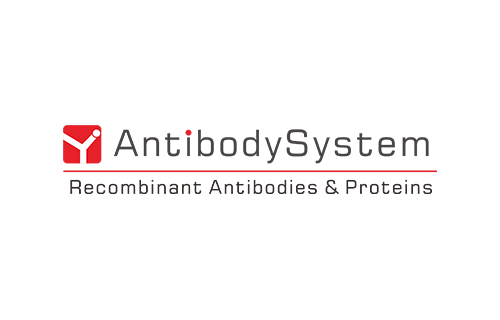Characterization of IgE cross-reactivity and allergenicity of peanut allergens., PMID:40447301
Exploring geographical variances in component-resolved diagnosis within the Asia-Pacific region., PMID:40105317
Structural determinants of peanut-induced anaphylaxis., PMID:39805366
Prophylactic Peanut Allergen Ara h 6 Sublingual Immunotherapy Drives Expansion of FoxP3 +Helios- Regulatory T Cells in the Absence of Allergen-Specific IgA., PMID:39777617
Baseline epitope-specific IgE profiles are predictive of sustained unresponsiveness or high threshold 1-year post oral immunotherapy in the POISED trial., PMID:39505279
Effects of genetic diversity on the allergenicity of peanut (Arachis hypogaea) proteins: identification of the hypoallergenic accessions using BALB/c mice model and in silico analysis of Ara h 3 allergen cross-reactivity., PMID:39047939
Longitudinal peanut and Ara h 2 specific-IgE, -IgG4, and -IgG4/-IgE ratios are associated with the natural resolution of peanut allergy in childhood., PMID:38720169
Neutralizing IgG4 antibodies are a biomarker of sustained efficacy after peanut oral immunotherapy., PMID:38460677
Optimising the management of peanut allergy by targeting immune plasticity., PMID:38423799
The structure and potential allergenicity of peanut allergen monomers after roasting., PMID:38353700
The Sensitization Profile for Selected Food Allergens in Polish Children Assessed with the Use of a Precision Allergy Molecular Diagnostic Technique., PMID:38255900
AIT 2023: Current innovation and future outlook., PMID:38143940
Development and evaluation of mouse anti-Ara h 1 and Ara h 3 IgE monoclonal antibodies for advancing peanut allergy research., PMID:38034322
Systematic review and meta-analyses on the accuracy of diagnostic tests for IgE-mediated food allergy., PMID:38009299
Unique allergen-specific human IgE monoclonal antibodies derived from patients with allergic disease., PMID:37901762
EAACI guidelines on the diagnosis of IgE-mediated food allergy., PMID:37815205
Clinical severity of LTP syndrome is associated with an expanded IgE repertoire, FDEIA, FDHIH, and LTP mono reactivity., PMID:37712443
Alanine Scanning of the Unstructured Region of Ara h 2 and of a Related Mimotope Reveals Critical Amino Acids for IgE Binding., PMID:37706599
Would the choice of multiplex platform impact the management of the allergic patient? A first approach focusing on LTPs., PMID:37638561
Ara h 2 Peptide Mix Improves the Diagnosis of Peanut Allergy and Is Relevant for Ara h 2-Induced Mast Cell Activation., PMID:37495080
Risk Factors for Anaphylaxis in Children Allergic to Peanuts., PMID:37374241
IgE Recognition and Structural Analysis of Disulfide Bond Rearrangement and Chemical Modifications in Allergen Aggregations in Roasted Peanuts., PMID:37256970
Improving In Vitro Detection of Sensitization to Lipid Transfer Proteins: A New Molecular Multiplex IgE Assay., PMID:37195823
Developing a Prediction Model for Determination of Peanut Allergy Status in the Learning Early About Peanut Allergy (LEAP) Studies., PMID:37146884
Soy Gly m 8 sIgE Has Limited Value in the Diagnosis of Soy Allergy in Peanut Ara h 2-Sensitized Adults., PMID:37071975
Ara h 2-specific IgE epitope-like peptides inhibit the binding of IgE to Ara h 2 and suppress lgE-dependent effector cell activation., PMID:37038893
IgE cross-inhibition between Ara h 1 and Ara h 2 is explained by complex formation of both major peanut allergens., PMID:37028524
Immune response evolution in peanut epicutaneous immunotherapy for peanut-allergic children., PMID:36916639
A molecular sensitization map of European children reveals exposome- and climate-dependent sensitization profiles., PMID:36815272
Peanut allergen inhibition prevents anaphylaxis in a humanized mouse model., PMID:36753563
Structure and IgE Cross-Reactivity among Cashew, Pistachio, Walnut, and Peanut Vicilin-Buried Peptides., PMID:36728846
Targeting Ara h 2 with human-derived monoclonal antibodies prevents peanut-induced anaphylaxis in mice., PMID:36704937
Ara h 2-Specific IgE Presence Rather Than Its Function Is the Best Predictor of Mast Cell Activation in Children., PMID:36581066
Epitope-Specific IgE at 1 Year of Age Can Predict Peanut Allergy Status at 5 Years., PMID:36502801
Long-term IgE immunological tolerance to peanut allergens: An alternative to Noon's daily desensitization paradigm., PMID:36194940
Differences in Linear Epitopes of Ara h 9 Recognition in Peanut Allergic and Tolerant, Peach Allergic Patients., PMID:35935018
Targeting CD22 on memory B cells to induce tolerance to peanut allergens., PMID:35839842
Versatile Application of Nanobodies for Food Allergen Detection and Allergy Immunotherapy., PMID:35820160
Basophil Activation Test Utility as a Diagnostic Tool in LTP Allergy., PMID:35563370
Effect of high-moisture extrusion and addition of transglutaminase on major peanut allergens content extracted by three step sequential method., PMID:35338998
Detection of Circulating Peanut Components in Serum after Ingestion., PMID:35287134
Effect of Processing on the Structure and Allergenicity of Peanut Allergen Ara h 2 Roasted in a Matrix., PMID:35000380
High-resolution epitope mapping by AllerScan reveals relationships between IgE and IgG repertoires during peanut oral immunotherapy., PMID:34755130
Analysis of Peanut Allergen Components Sensitization and Cross Reaction with Pollen Allergen in Chinese Southerners with Allergic Rhinitis and/or Asthma., PMID:34737581
Peanut Component Ara h 1 and 2 Sensitization in Patients with Food Allergy in Kuwait., PMID:34700320
Combining Allergen Components Improves the Accuracy of Peanut Allergy Diagnosis., PMID:34492400
Diagnostic accuracy of Ara h 2 for detecting peanut allergy in children., PMID:34288182
The impact of a baked muffin matrix on the bioaccessibility and IgE reactivity of egg and peanut allergens., PMID:34118511
Distinction between peanut allergy and tolerance by characterization of B cell receptor repertoires., PMID:33969502
Extract and molecular-based early infant sensitization and associated factors-A PreventADALL study., PMID:33751598

